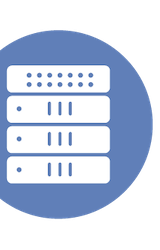Back in February, Broadcom presented at their first ever Networking Field Day! Justin Pietsch has since seen the presentations, and mentions them in his summary of High Speed Ethernet ASICs, were he takes a deep dive into the companies in this space. Justin highlights Broadcom’s work, writes about their Strata XGS and Strata DNX chips, and shares that they are putting out intriguing offerings that are helping them keep up with the competition. Check out Justin’s full analysis on his blog and the videos of Broadcom’s presentations at Networking Field Day 22 on our website!
The New Branch With Riverbed SD-WAN
What does your branch office look like? I’m sure the answer to that question is different than it was just six months ago. Tom Hollingsworth takes a look back at Riverbed’s presentation from Networking Field Day and how they have the right tools to make your new branch work just like it should.
A Tale of Scale in Three Parts With Broadcom
Broadcom is one of the biggest suppliers for chips in the networking market? But how do they provide the chips you need to fit the services and operations you’re selling? Tom Hollingsworth takes a look at their lineup and how they can scale in a variety of ways to fit the bill. The company showed off a lot of their solutions at Networking Field Day earlier this year, so be sure to get up to speed on this article before diving into their full video presentation.
Defeating Configuration Drift With Gluware
No two configurations are the same. Usually because they’ve been modified outside of recommended parameters. If you want to stop this from happening in your network, you need a tool that can detect the drift in your devices. Tom Hollingsworth examines Gluware and their presentation during Networking Field Day to see how they can help network admins keep your configs on track. Their drift tool takes a snapshot of the configuration of a device and allows you to quickly compare it with the state of the device later on. Tom admits to causing some network drift in his time, so he’s glad to see there’s a solution out there to help address it.
A Week of Unexpected Expectedness With Forward Networks
In this post, Tom Hollingsworth reviews the Forward Networks presentation about a week in the life of a network engineer from a recent Networking Field Day and how their Network Query Engine can help you get a jump on those totally unexpected problems you’re expecting. For Tom, NQE is the resource network admins can talk to in order to find the information they have to have to make the right decisions. It’s like a network encyclopedia. And any resource that can cut down on time to resolve problems or troubleshoot issues means admins can spend less of their week working on unexpected issues and more time keeping things running smoothly so those issues don’t crop up.
Network Field Day 22
Tony Efantis wrote up this piece looking back at Networking Field Day. An in-person event, Tony got to see first hand, not just the excellent presentations from a wide swath of networking companies, but to experience the community aspects that go on behind the scenes. We’re glad that Tony found the experience to be “magical”, and we’re happy that we’re able to keep the magic going with our virtual Field Day events too!
Network Field Day 22 – DriveNets
Tony Efantis attended his first Networking Field Day event, and thought DriveNets really set a high bar with their kickoff presentation. They showed how they’ve created a horizontally scalable routing platform by completely disaggregating the software from the hardware. While that may sound like a like of buzzwords, Tony was happy to see DriveNets offered a truly unique approach to routing that really makes them stand out in an increasingly crowded market. While horizontal scale isn’t something that every organization needs, Tony sees it as a natural fit for service providers and cloud scalers where growth is rapid and seemingly never ending. DriveNets lets its customers add resources as needed in the form of adding nodes. Be sure to dig into his full piece for all his thoughts, then jump into DriveNets’ presentation video.
Get Your Network Under Control With Gluware
Phil Gervasi has seen the rise of network automation, and thinks across IT the idea and practice has gone pretty mainstream. Of course, this doesn’t mean there isn’t a steep learning curve for organizations to embrace automation. But in practice, Phil hasn’t seen that as the primary thing stopping automation efforts, rather its the resources it takes to get automation going at scale that stalls many organizations. But he found that Gluware’s vendor-agnostic, pre-packaged automation platform is a good way to smooth out this process. At Networking Field Day, they showed how they can operate alongside homegrown automation initiatives, and with traditional local device management. But for Phil, the ability to bring their pre-built intelligence to the network can solve the problem of having to develop everything from scratch.
Leaving Legacy Behind to Build Better Networks With DriveNets
How do you build a network operating system today that has none of the technical baggage from years past? Can we ever really leave behind the technologies of yesteryear? Tom Hollingsworth reviews the DriveNets Network Operating System and how it modernizes a platform that needs to leave the legacy behind. He got a deep dive on it at Networking Field Day, where they did an architectural over, and showed how they built it from the ground up with microservices in mind.
Broadcom
Jeff Fry definitely found a lot to be excited about from Broadcom’s presentation at Networking Field Day. The company’s components are at the hard of much of the modern networking stack, and at the event, they had numerous engineers and chip designers on hand to give some technical deep dives. The company provided an overview of their three chip classes, designed for service providers, hyperscalers, and enterprises. Be sure to check out their presentation video to get all the technical details.
Ensuring Code Quality With Arista
Are you having issues with code quality? Do you feel like things keep getting worse when you install the latest patch? Maybe the process behind the scenes is broken. Perhaps you need to look at what a good example of code development looks like. Tom Hollingsworth reviews the process from Arista after their presentation at Networking Field Day.
Exorcising Network Ghosts With VMware NSX Advanced Load Balancer
Is your networking haunted? Or do you feel like problems are happening and you can’t find them? Who you gonna call? Tom Hollingsworth looks at how VMware NSX Advanced Load Balancer can help you bust the ghosts that haunt your network and prove that the problems are floating around somewhere else. While definitely a spooky topic, luckily Tom found VMware’s presentation from Networking Field Day to be anything but.
Gluware
At Networking Field Day, Jeff Fry got to hear from Gluware who discussed how the provide a solution to keep network configurations in compliance with the desired state. After the presentation, he tried out there Intelligent Network Automation Test Drive. He found it to be an effective way to overcome some of the hurdles in the current state of network automation, helping to mitigate both vendor specific automation tools, and the skills gap between CLI proficient network engineers and those that employs scripts. Jeff thinks a lot of organizations should give Gluware a look, as they have tools for deployment to audit, to security, and beyond.
A Measure of Automation With Juniper Networks
You may be automating all the things, but are you verifying and measuring the outcomes of your automation? You need to be sure before you move forward on your journey. Tom Hollingsworth takes a look at Juniper Networks Contrail Insights and how it can help you make sure you’re automating the right things. Juniper did a deep dive on Contrail Insights at Networking Field Day, showing how a journey to automation is a matter steps. For Tom, Contrail Insights might not be the most exciting step in that journey, but arguably one of the most important.
Disaggregated Routing Software With DriveNets
In this piece, Rowell Dionicio considers the state of whitebox networking. While being around for about six years, it’s not something that he’s personally seen really gaining a lot of traction. But after seeing DriveNets present at Networking Field Day, he thinks the age of whitebox networking might be now for Service Providers. DriveNets wants to bring a disaggregated network approach to Service Providers, using their software-based Network Cloud to scale whiteboxes and software. Rowell digs into how this disaggregation can work financially for SPs, and how DriveNets is up to the technical challenge as well.
Broadcom Processors Are Blazingly Fast
Evan Mintzer attended Networking Field Day earlier this year and got to hear from Broadcom. As one of the most prominent merchant silicon companies across the networking stack, it’s not surprising that Evan was interested in what they had to say. Their presentation focused on their network processor silicon, and was complex enough that Evan had to rewatch it to make sure it understood it all. They did a deep dive on their processor architecture, which allows for truly impressive speeds, supporting a switch at up to 25.6Tbps using a Tomahawk4 processor. Be sure to check out the videos to get up to speed on their latest and greatest.
SD-WAN and Technical Debt
At a recent discussion with delegates at Networking Field Day, Tom Hollingsworth wondered why SD-WAN startups have been able to be so aggressive with innovating in the space, while established networking companies have struggled to keep up. This is endemic of the technical debt a lot of larger organizations carry. He considers something like Cisco’s IWAN, in many ways a precursor to modern SD-WAN. This ended up being complicated and hard to deploy because of many of the technology decisions that Cisco made years ago, resulting in both a software and hardware supply chain constraints on IWAN. Compare this to a startup, like the recent Networking Field Day presenter CloudGenix, who could design a solution around a desired functionality, rather than with a set of constraints inherited as technical debt. This SD-WAN example is just one way of looking at the role of technical debt in product development for large organizations.
How We Overcame the Challenges and Developed a Fully Distributed Network Operating System
This post from DriveNets’ Amir Krayden builds upon a previous post, where they looked at the challenges of developing their own fully distributed network operating system from scratch. This touches on a lot of what Amir discussed during the company’s recent presentation at Networking Field Day. By building a networking OS that is built for scale, service growth and orchestration, they’re able to base router architecture the the web scale native to the cloud. This piece digs into how the company solved the not inconsiderable challenges they faced.
Building a Software Defined Cloud Network With CloudGenix
In this case, Phil Gervasi makes the case that while a lot of SD-WAN conversations still position the solution as an emerging technology, that’s no longer the case. He argues that with clear uses cases having emerged, it is now a maturing technology, and that the differentiator for a lot of providers comes down to cloud connectivity. SD-WAN is less about cost saving and load balancing, and more about connecting to cloud resources and SaaaS apps easier, more secure, and with a better user experience. At Networking Field Day, he heard from CloudGenix, which offers an SD-WAN solution that’s almost completely cloud focused, based on software running on commodity equipment. Rather than an appliance-in-a-box approach, they do this to offer a SD-WAN fabric with hooks into a wide array of cloud-based SaaS and IaaS solutions.
Autonomous SD-WAN by CloudGenix- My Analysis
Faisal Khan attended his first Networking Field Day event in four years, and got up to date with CloudGenix’s autonomous SD-WAN solution. There’s no dearth of companies competing in the SD-WAN market, so Faisal was curious how they would differentiate. What caught his eye was their application-centric paradigm using a single edge appliance. This offers real-time analytics without the need for cloud-based controllers or a cloud analytics engine. Overall Faisal sees CloudGenix appealing to service providers or customers needing an efficient solution on the edge.







